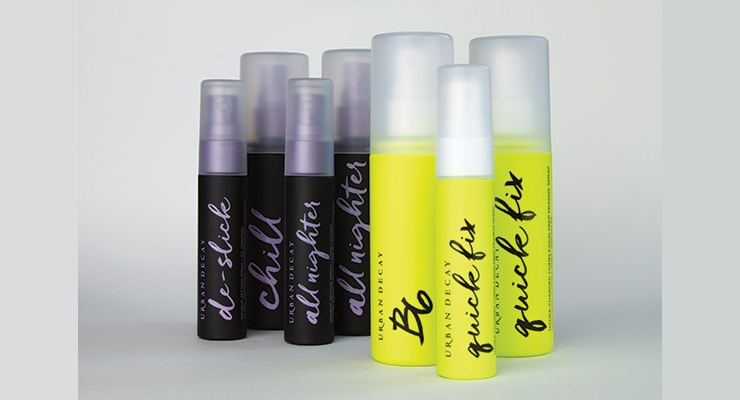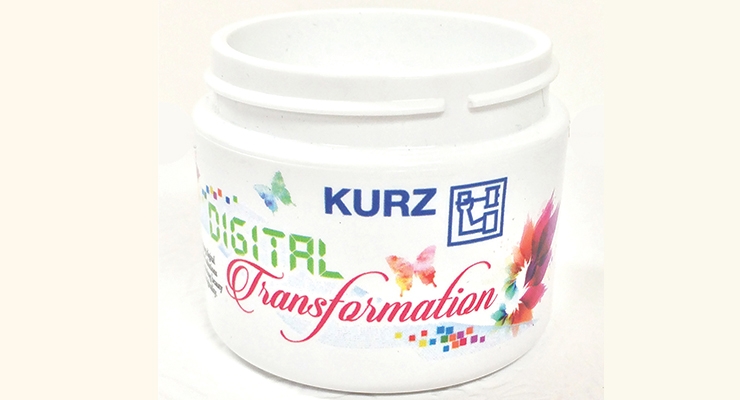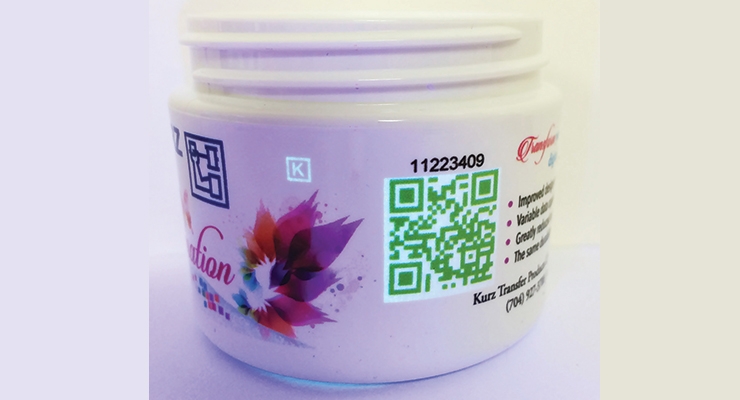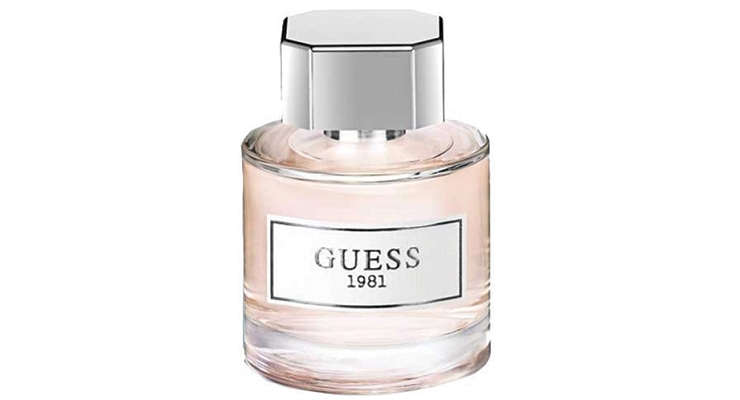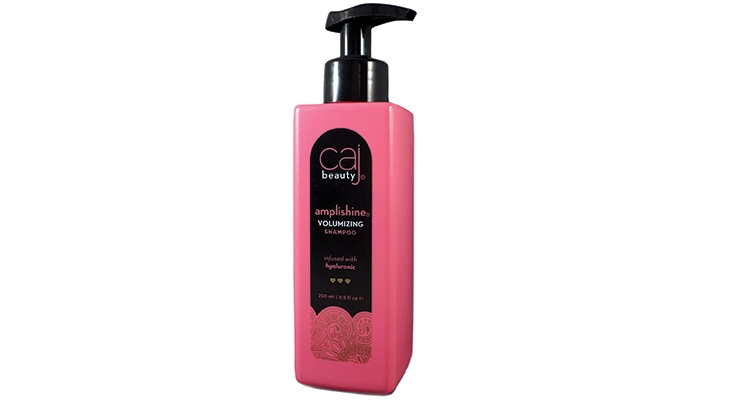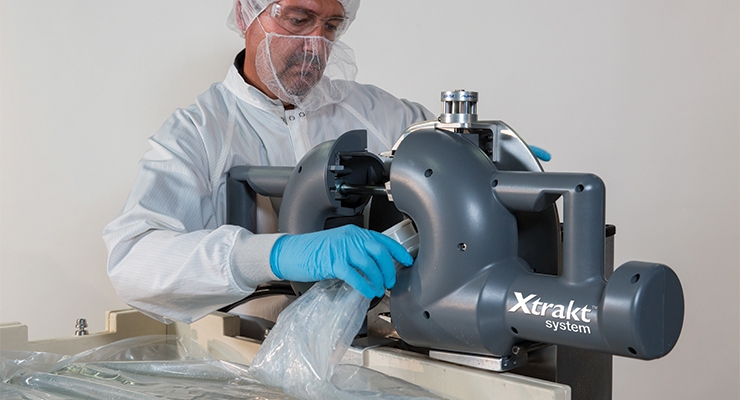Joanna Cosgrove, Contributing Editor09.01.17
Depending on who you talk to, the current atmosphere for buying American-made packaging componentry has its share of pros and cons, but for U.S.-based packaging suppliers, there are plenty of reasons for optimism.
First and foremost, there’s an inherent pride associated with buying something that proclaims it’s Made in the USA because it supports the domestic workforce and national economy. It’s a pride felt both by U.S. beauty brands and the consumers they sell to. “There’s been a harder push for patriotism as well as for nationally manufactured items—all of which bode well for U.S.-based primary and secondary packaging companies,” says John Keane, vice president of sales, Kurz Transfer Products LP, Charlotte, NC. “Because of the influx of available information and a demand for transparency from brands, ‘Made in the USA’ has value again from consumers.”
Beyond the tax benefits, one of the key benefits to sourcing U.S.-made packaging is domestic proximity and its fundamental capacity to connecting brands with their suppliers. “Communication is an increasingly important issue,” says Mark Stanek, marketing communications specialist, Kaufman Container Company, Cleveland, OH. “Working with companies in the United States helps avoid language barriers, extreme time differences and provides the customer with the opportunity to watch their products run in-line.”
There’s also a case for improved lead time logistics. “More and more, U.S. marketers want to source packaging in the regions where their consumers ultimately buy the final product,” says Scott Rusch, president and CEO, Anomatic Corp., New Albany, OH, noting that this sourcing strategy ties into speed to market and shorter lead times for replenishment and sustainability. “We can provide clients with faster speed to market and replenishment than foreign competitors, if for no other reason than shipping time.”
Partnering with U.S. manufacturers additionally implies a higher sense of confidence due to regulated oversights on quality control, says Amy Skellett, marketing and communications manager, Kolmar Laboratories Inc., A KDC Company, Port Jervis, NY. “Working with U.S. manufacturers gives brands the confidence to know they will be receiving a product that goes through strict quality controls,” she says. “Consumers are becoming more selective and conscious when making product choices and the U.S. has strict guidelines to ensure products are safe and effective.”
This is especially true for brands that manufacture products that are ingested or applied to the body. “China does not have the regulatory restrictions that the U.S. has in place and if you look at the explosion of counterfeited products, I would think this is a valuable USP for the consumer,” says Mike Masotti, director of product innovation, New York Label & Box Works, Islandia, NY. “Look at fake makeup and the effects it has had on unwary consumers: rashes on face from fake blush, swollen lips, etcetera.”
Using packaging to combat counterfeit products is a characteristic quality of American packaging. Kurz’s Keane says value can be found in cost-effective covert security and counterfeiting prevention, such as using an invisible, UV image that’s printed discretely into the design. Kurz has been working with several brands to devise a secure digital solution for decorating plastic jars and tubes. “A digital decoration process allows for higher photo resolution and design potentials, can allow for smaller runs and can incorporate variable information such as QR codes, bar codes and serial numbers,” Keane says. “The digital heat transfer is applied the same as a traditional heat transfer and meets the chemically resistant needs of most plastic and glass substrates. This product comes with its own economic benefits for both small to large scale production needs.”
Many of Kurz’s standard hot stamping foils and cold foils are manufactured at its facility in Lexington, NC. “We have distribution and converting facilities located throughout the United States to ensure that our customers retain the quick turnaround that should be expected as a benefit from dealing with a company that has local manufacturing facilities and distribution versus overseas manufacturing only,” Keane says.
Closing the Gaps
The long-held assumptions that packaging sourced overseas is always cheaper in cost (and quality) is no longer a hard and fast rule. The cost gap continues to shrink and the innovation playing field is all but leveled.
“Low purchasing costs lured manufacturing to move offshore but as material and/or labor costs have risen in many previously ‘low-cost’ countries, the economic advantage of off-shoring is no longer as large as it once was,” says Keane. “U.S.-based packaging companies have made significant investments in plants and equipment, and through ongoing industry consolidation, to reduce cost, while increasing efficiency, flexibility and service.”
Rusch agrees, adding that domestic companies are now more attractive because they’re also equipped with specific technologies that aren’t available in Asia. “From my own company’s experience, these technologies can include high-speed transfer press stamping and high-volume color anodizing capabilities, which are big advantages in scaling from prototype to production and providing differentiation in aesthetic appeal,” he says, warning that despite the collective advancements, U.S. companies must not continue to rest on their laurels when it comes to competing on the concepts of quality and innovation. “Asian companies in our industry have steadily built manufacturing capabilities and know-how over the past 25-30 years and have improved their ability to innovate. The U.S. manufacturer must be equal to the task to win the business [because] innovative technologies are often a difference maker and those technologies allow U.S. manufacturers to promise a higher degree of consistency over a full production run.”
Anomatic has been investing heavily in innovative technologies and processes. For example, in the last year the company introduced a state-of-the-art vacuum metallization system that produces high-quality metallization on plastics. “This system is remarkably efficient in its use of lacquers, offering competitive cost and significantly lower environmental impact than competing systems installed in other parts of the world,” Rusch says. “We’ve coupled our metallization process with ultraviolet-cured, high-solid lacquers, to even further reduce our carbon footprint.”
Anomatic tapped into its technical abilities to create an elegant, multi-component, anodized aluminum closure for Guess 1981, a women’s fragrance launched this spring. “After designing the custom plastic insert, custom weight and custom metal shell in-house, we formed the metal with proprietary tooling to avoid sharp edges; anodized the metal shells; and assembled the plastic, weight and metal component with fully-integrated automated assembly—all in one motion,” explains Rusch, adding that the closure design included a unique, faceted shape with sharp angles. “While highly uncommon with metal, we formed the multifaceted closures after designing and building the proprietary tooling—made from a special carbide to avoid mechanical buffing—in-house in order to avoid any sharp edges, making the closures consumer-friendly.”
Jing Santos, regional sales manager, Compax Packaging, Salt Lake City, UT, says that while beauty brands might still find more economical lipstick, lip gloss, mascara, and compact packaging overseas, personal care brands’ use of stock tubes, bottles and jars makes buying American easier, thanks to improved local sourcing. “American-made is usually higher quality and the packaging has a certain fit and finish that’s distinct—but China has gone a long way within the past 15 or so years,” he says.
Compax has been busy churning out dazzling new packaging for Urban Decay that has, in tandem with UD’s distinctive and trailblazing approach to beauty, helped elevate the brand’s following in an otherwise crowded segment. One of UD’s trademark product lines is its range of Makeup Setting Sprays. Five years ago, the products were housed in stock Compax PET bottles with PP overcaps.
At the time, UD required a soft-touch finish on the bottles which had to be outsourced, adding two to four weeks to production times. Two years ago, UD sought to reduce lead times and requested that Compax make the packaging in the USA. “Fortunately for us, we have our own EBM factory in Salt Lake City, UT,” says Santos. “We built an eight-cavity mold for the coextruded PE/Soft-Touch bottle. This not only saved them six weeks in lead-times, but we also managed to save them on cost.”
Bringing it Home
Kaufman’s Stanek says his company frequently receives inquiries from companies who want to trade their previously-sourced-overseas-product for something hailing from closer to home. “The primary complaint is the quality of the products they are receiving,” he says. “Many of them are not as advertised and our customers are realizing that is difficult to communicate and discuss quality issues with a company not located in the United States.”
Caj Beauty LLC turned to Kaufman Container to execute the silk screening on a 250ml custom pink square HDPE bottle for a hair care formulation. Both the front and back were screen printed three colors for a total of six colors, at Kaufman’s in-house decorating facility in Cleveland. “In general, printing on a square bottle is more complex than a round bottle because it requires additional passes,” Stanek says. Kaufman’s in-house graphic designers contributed to improving the appeal of the package by recommending an increase in font size to enhance the package’s readability.
Richard Engel, president and COO, Decotech Inc., Englewood, NJ, says the shifting preference to American-made products has given rise to a new buzzword: regionalization. “Shortening supply-chain lead times has become extremely important for brands that sell in the United States,” he says. “The ongoing fragmentation of the cosmetic and fragrance markets has made it very difficult for brands to create forecasts and to order for large launches like they used to. By selecting domestic suppliers in each market, cosmetic and fragrance brands trim their response-to-market timing considerably.”
Engel says American packaging suppliers also satisfy a critical flexibility favored by North American beauty and fragrance brands. “Not so many years ago, brands would create forecasts and launch with enough volume to support the initial re-orders from overseas suppliers. Now, with the rise of successful internet startup brands and popular beauty bloggers, a product’s success is less predictable and manageable,” he says. “Brands would rather launch smaller to contain the risk, and then quickly chase into an oversell with a short lead-time from a domestic supplier base.”
In the fragrance segment, Kurz’s Kean says Europe has long been the front-running producer of “exotic” packaging designs; however, the U.S. has emerged as a trendsetter in its own right. “There is a shift with the importance of crafted materials,” observes Keane, pointing to the growth of the millennial generation’s penchant for uniqueness, customization and individualization. “Package design, both aesthetically and structurally, is shifting away from the norm and into the creative, such as high-heel shaped containers, vividly colored and themed packaging and unusual or non-traditional designs. Design trends into the crafted, small batch and niche market definitely define United States entrepreneurs in these markets.”
The Made in the USA appeal continues to be significant for not only American-based beauty brands but also those located abroad. “Today, it seems to be more of an expectation from U.S. consumers than a preference,” concludes Kolmar’s Skellett. “For that reason, you are seeing many manufacturers outside of the U.S. realizing the weight of that claim and looking to expand their presence in the U.S.”
“Waste not, want not” is a proverb with real-world meaning for beauty manufacturers keen on streamlining processes and maximizing sustainability. The Xtrakt System from Frederica, DE-based ILC Dover is a new system designed to provide virtually complete extraction of both low- and high-viscosity (up to 900,000 cP) liquids, such as lotions, creams and gels during the bulk dispensing portion of the manufacturing process.
Launched in May, the U.S.-designed and assembled technology reduces the amount of product remaining to as little as 0.1% of the liner’s capacity, meaning a residual product of less than 2kg remaining in a typical 1,200-liter (315-gallon) liner, compared to 4–10 kilos (10–40 pounds) of residual product using typical air assist or roller systems.
In one customer trial, where high residuals of a costly product had been the norm, test data proved that using the Xtrakt System not only saved processing time and cost, but—because the operator no longer had to slit a bag open to manually extract the remaining high-value product—it supplied the added benefit of eliminating a source of potential product contamination, allowing the operator to maintain sanitary conditions throughout the manufacturing process.
The value of packaging with a “Made in the USA” proclamation is especially precious for companies like New York-based Arkay Packaging. “Arkay’s founder, first generation CEO Max Kaneff, came to America from Russia in 1922 and opened our company in a small warehouse on the Lower East Side of Manhattan,” explains Ruth Rugoff, Arkay’s director of events and public relations. “For him, being able to manufacture on American soil was the height of success. Max was so proud of his company and very dedicated to setting down roots in his adopted country.”
This pride, Rugoff says, continues to be evident in Arkay’s fundamental belief in the quality of American craftsmanship. “The quality of Arkay’s work reflects an attentive on-site workforce, which simply can’t be replicated overseas,” she says. “Arkay continues to adhere to a ‘Made in the USA’ culture to this day and building our state of the art facility in Roanoke, VA, is a potent demonstration of that ideology.”
Irvine, CA-based JSN is also a believer in the power of Made in USA. For more than three decades, the family business has manufactured tubes, injection molded closures and offered deco services, and Sandy Nagel, JSN’s vice president, says ‘Made in America’ has been a big part of its business and marketing, as well as a key visual on its packaging. “The Made in USA manufacturing climate has nurtured our growth and our dedication to serving our customers – which in turn contributes to building our customers; brands, helping them rise in their markets,” she says. “This is our heritage, which we believe exists because of the USA.”
Nagel says her larger customers have expectations that products should be made domestically, whereas niche and entrepreneurial consumers are more focused on cost and speed. “Overseas sourcing certainly has its place, particularly when cost is paramount, but in the end, we believe our emphasis should be perfecting the process right here at home,” she says, maintaining that the American flag is a visual reinforcement of quality and heritage. “We believe that price sensitivity takes a back seat to products that the end consumer trusts enough to be willing to spend their hard-earned dollars.”
JSN’s new Bright Beauty sample concept highlights its tube packaging deco innovations. The tube combines eight-color offset printing, multi-color silk screen, hot stamp foil application and pressure sensitive labeling, all in a sustainable, Made in the USA package option.
The beauty segment, more than any other, is dominated by the concept of branding. Two young American companies are turning that concept upside down, launching lines of ultra-affordable, high-quality, direct-to-consumer products that feature a stripped down, no-nonsense emphasis on product, instead of propaganda.
Morgan Hirsh, founder of Public Goods, told Beauty Packaging that although her packaging doesn’t create the same splash as higher-priced branded products, it doesn’t mean her packaging was chosen purely with frugality in mind. The company spent time researching packaging and working with some of Brooklyn’s most talented and respected designers before landing on a concept that fit.
The result might look like stock packaging but it’s most assuredly not – each classically shaped vessel was custom-made in California using sugar cane and fossil fuel-free means.
“Beautiful, simple design has, until now, been reserved for high priced brands,” she says. “A lot of people want beautiful, simple products for their homes but don’t want to pay $40 a bottle. We made the simplest most beautiful bottles, put the best ingredients inside, and decided not to overcharge for it.”
Another hallmark of the line is the distinct lack of marketing jargon on its packaging, opting instead for spare, self-explanatory terms like “soap” and “shampoo.” The only exception? The “it’s all good” line printed on the bottom of each package. “That communicates quality and cleanliness without having to write a bunch of nonsense on a bottle which I think has the opposite of its intended effect,” Hirsch says.
Public Goods’ product line currently spans 13 personal care and household products but more products are in the pipeline for 2018.
Brandless, a venture capital-backed, Silicon Valley, CA-based company formed by Tina Sharkey, co-founder of iVillage, and Ido Leffler, co-founder of Yes To, shares a similarly pared-down (albeit more colorful) package design and price philosophy. Launched in July, the company is on track to offer 200 curated personal care, food and home products by year’s end, each bearing a price tag of just $3—which the company says is achievable because it eschews BrandTax, “the hidden costs that come with buying a national brand.”
First and foremost, there’s an inherent pride associated with buying something that proclaims it’s Made in the USA because it supports the domestic workforce and national economy. It’s a pride felt both by U.S. beauty brands and the consumers they sell to. “There’s been a harder push for patriotism as well as for nationally manufactured items—all of which bode well for U.S.-based primary and secondary packaging companies,” says John Keane, vice president of sales, Kurz Transfer Products LP, Charlotte, NC. “Because of the influx of available information and a demand for transparency from brands, ‘Made in the USA’ has value again from consumers.”
Beyond the tax benefits, one of the key benefits to sourcing U.S.-made packaging is domestic proximity and its fundamental capacity to connecting brands with their suppliers. “Communication is an increasingly important issue,” says Mark Stanek, marketing communications specialist, Kaufman Container Company, Cleveland, OH. “Working with companies in the United States helps avoid language barriers, extreme time differences and provides the customer with the opportunity to watch their products run in-line.”
There’s also a case for improved lead time logistics. “More and more, U.S. marketers want to source packaging in the regions where their consumers ultimately buy the final product,” says Scott Rusch, president and CEO, Anomatic Corp., New Albany, OH, noting that this sourcing strategy ties into speed to market and shorter lead times for replenishment and sustainability. “We can provide clients with faster speed to market and replenishment than foreign competitors, if for no other reason than shipping time.”
Partnering with U.S. manufacturers additionally implies a higher sense of confidence due to regulated oversights on quality control, says Amy Skellett, marketing and communications manager, Kolmar Laboratories Inc., A KDC Company, Port Jervis, NY. “Working with U.S. manufacturers gives brands the confidence to know they will be receiving a product that goes through strict quality controls,” she says. “Consumers are becoming more selective and conscious when making product choices and the U.S. has strict guidelines to ensure products are safe and effective.”
This is especially true for brands that manufacture products that are ingested or applied to the body. “China does not have the regulatory restrictions that the U.S. has in place and if you look at the explosion of counterfeited products, I would think this is a valuable USP for the consumer,” says Mike Masotti, director of product innovation, New York Label & Box Works, Islandia, NY. “Look at fake makeup and the effects it has had on unwary consumers: rashes on face from fake blush, swollen lips, etcetera.”
Using packaging to combat counterfeit products is a characteristic quality of American packaging. Kurz’s Keane says value can be found in cost-effective covert security and counterfeiting prevention, such as using an invisible, UV image that’s printed discretely into the design. Kurz has been working with several brands to devise a secure digital solution for decorating plastic jars and tubes. “A digital decoration process allows for higher photo resolution and design potentials, can allow for smaller runs and can incorporate variable information such as QR codes, bar codes and serial numbers,” Keane says. “The digital heat transfer is applied the same as a traditional heat transfer and meets the chemically resistant needs of most plastic and glass substrates. This product comes with its own economic benefits for both small to large scale production needs.”
Many of Kurz’s standard hot stamping foils and cold foils are manufactured at its facility in Lexington, NC. “We have distribution and converting facilities located throughout the United States to ensure that our customers retain the quick turnaround that should be expected as a benefit from dealing with a company that has local manufacturing facilities and distribution versus overseas manufacturing only,” Keane says.
Closing the Gaps
The long-held assumptions that packaging sourced overseas is always cheaper in cost (and quality) is no longer a hard and fast rule. The cost gap continues to shrink and the innovation playing field is all but leveled.
“Low purchasing costs lured manufacturing to move offshore but as material and/or labor costs have risen in many previously ‘low-cost’ countries, the economic advantage of off-shoring is no longer as large as it once was,” says Keane. “U.S.-based packaging companies have made significant investments in plants and equipment, and through ongoing industry consolidation, to reduce cost, while increasing efficiency, flexibility and service.”
Rusch agrees, adding that domestic companies are now more attractive because they’re also equipped with specific technologies that aren’t available in Asia. “From my own company’s experience, these technologies can include high-speed transfer press stamping and high-volume color anodizing capabilities, which are big advantages in scaling from prototype to production and providing differentiation in aesthetic appeal,” he says, warning that despite the collective advancements, U.S. companies must not continue to rest on their laurels when it comes to competing on the concepts of quality and innovation. “Asian companies in our industry have steadily built manufacturing capabilities and know-how over the past 25-30 years and have improved their ability to innovate. The U.S. manufacturer must be equal to the task to win the business [because] innovative technologies are often a difference maker and those technologies allow U.S. manufacturers to promise a higher degree of consistency over a full production run.”
Anomatic has been investing heavily in innovative technologies and processes. For example, in the last year the company introduced a state-of-the-art vacuum metallization system that produces high-quality metallization on plastics. “This system is remarkably efficient in its use of lacquers, offering competitive cost and significantly lower environmental impact than competing systems installed in other parts of the world,” Rusch says. “We’ve coupled our metallization process with ultraviolet-cured, high-solid lacquers, to even further reduce our carbon footprint.”
Anomatic tapped into its technical abilities to create an elegant, multi-component, anodized aluminum closure for Guess 1981, a women’s fragrance launched this spring. “After designing the custom plastic insert, custom weight and custom metal shell in-house, we formed the metal with proprietary tooling to avoid sharp edges; anodized the metal shells; and assembled the plastic, weight and metal component with fully-integrated automated assembly—all in one motion,” explains Rusch, adding that the closure design included a unique, faceted shape with sharp angles. “While highly uncommon with metal, we formed the multifaceted closures after designing and building the proprietary tooling—made from a special carbide to avoid mechanical buffing—in-house in order to avoid any sharp edges, making the closures consumer-friendly.”
Jing Santos, regional sales manager, Compax Packaging, Salt Lake City, UT, says that while beauty brands might still find more economical lipstick, lip gloss, mascara, and compact packaging overseas, personal care brands’ use of stock tubes, bottles and jars makes buying American easier, thanks to improved local sourcing. “American-made is usually higher quality and the packaging has a certain fit and finish that’s distinct—but China has gone a long way within the past 15 or so years,” he says.
Compax has been busy churning out dazzling new packaging for Urban Decay that has, in tandem with UD’s distinctive and trailblazing approach to beauty, helped elevate the brand’s following in an otherwise crowded segment. One of UD’s trademark product lines is its range of Makeup Setting Sprays. Five years ago, the products were housed in stock Compax PET bottles with PP overcaps.
At the time, UD required a soft-touch finish on the bottles which had to be outsourced, adding two to four weeks to production times. Two years ago, UD sought to reduce lead times and requested that Compax make the packaging in the USA. “Fortunately for us, we have our own EBM factory in Salt Lake City, UT,” says Santos. “We built an eight-cavity mold for the coextruded PE/Soft-Touch bottle. This not only saved them six weeks in lead-times, but we also managed to save them on cost.”
Bringing it Home
Kaufman’s Stanek says his company frequently receives inquiries from companies who want to trade their previously-sourced-overseas-product for something hailing from closer to home. “The primary complaint is the quality of the products they are receiving,” he says. “Many of them are not as advertised and our customers are realizing that is difficult to communicate and discuss quality issues with a company not located in the United States.”
Caj Beauty LLC turned to Kaufman Container to execute the silk screening on a 250ml custom pink square HDPE bottle for a hair care formulation. Both the front and back were screen printed three colors for a total of six colors, at Kaufman’s in-house decorating facility in Cleveland. “In general, printing on a square bottle is more complex than a round bottle because it requires additional passes,” Stanek says. Kaufman’s in-house graphic designers contributed to improving the appeal of the package by recommending an increase in font size to enhance the package’s readability.
Richard Engel, president and COO, Decotech Inc., Englewood, NJ, says the shifting preference to American-made products has given rise to a new buzzword: regionalization. “Shortening supply-chain lead times has become extremely important for brands that sell in the United States,” he says. “The ongoing fragmentation of the cosmetic and fragrance markets has made it very difficult for brands to create forecasts and to order for large launches like they used to. By selecting domestic suppliers in each market, cosmetic and fragrance brands trim their response-to-market timing considerably.”
Engel says American packaging suppliers also satisfy a critical flexibility favored by North American beauty and fragrance brands. “Not so many years ago, brands would create forecasts and launch with enough volume to support the initial re-orders from overseas suppliers. Now, with the rise of successful internet startup brands and popular beauty bloggers, a product’s success is less predictable and manageable,” he says. “Brands would rather launch smaller to contain the risk, and then quickly chase into an oversell with a short lead-time from a domestic supplier base.”
In the fragrance segment, Kurz’s Kean says Europe has long been the front-running producer of “exotic” packaging designs; however, the U.S. has emerged as a trendsetter in its own right. “There is a shift with the importance of crafted materials,” observes Keane, pointing to the growth of the millennial generation’s penchant for uniqueness, customization and individualization. “Package design, both aesthetically and structurally, is shifting away from the norm and into the creative, such as high-heel shaped containers, vividly colored and themed packaging and unusual or non-traditional designs. Design trends into the crafted, small batch and niche market definitely define United States entrepreneurs in these markets.”
The Made in the USA appeal continues to be significant for not only American-based beauty brands but also those located abroad. “Today, it seems to be more of an expectation from U.S. consumers than a preference,” concludes Kolmar’s Skellett. “For that reason, you are seeing many manufacturers outside of the U.S. realizing the weight of that claim and looking to expand their presence in the U.S.”
“Waste not, want not” is a proverb with real-world meaning for beauty manufacturers keen on streamlining processes and maximizing sustainability. The Xtrakt System from Frederica, DE-based ILC Dover is a new system designed to provide virtually complete extraction of both low- and high-viscosity (up to 900,000 cP) liquids, such as lotions, creams and gels during the bulk dispensing portion of the manufacturing process.
Launched in May, the U.S.-designed and assembled technology reduces the amount of product remaining to as little as 0.1% of the liner’s capacity, meaning a residual product of less than 2kg remaining in a typical 1,200-liter (315-gallon) liner, compared to 4–10 kilos (10–40 pounds) of residual product using typical air assist or roller systems.
In one customer trial, where high residuals of a costly product had been the norm, test data proved that using the Xtrakt System not only saved processing time and cost, but—because the operator no longer had to slit a bag open to manually extract the remaining high-value product—it supplied the added benefit of eliminating a source of potential product contamination, allowing the operator to maintain sanitary conditions throughout the manufacturing process.
The value of packaging with a “Made in the USA” proclamation is especially precious for companies like New York-based Arkay Packaging. “Arkay’s founder, first generation CEO Max Kaneff, came to America from Russia in 1922 and opened our company in a small warehouse on the Lower East Side of Manhattan,” explains Ruth Rugoff, Arkay’s director of events and public relations. “For him, being able to manufacture on American soil was the height of success. Max was so proud of his company and very dedicated to setting down roots in his adopted country.”
This pride, Rugoff says, continues to be evident in Arkay’s fundamental belief in the quality of American craftsmanship. “The quality of Arkay’s work reflects an attentive on-site workforce, which simply can’t be replicated overseas,” she says. “Arkay continues to adhere to a ‘Made in the USA’ culture to this day and building our state of the art facility in Roanoke, VA, is a potent demonstration of that ideology.”
Irvine, CA-based JSN is also a believer in the power of Made in USA. For more than three decades, the family business has manufactured tubes, injection molded closures and offered deco services, and Sandy Nagel, JSN’s vice president, says ‘Made in America’ has been a big part of its business and marketing, as well as a key visual on its packaging. “The Made in USA manufacturing climate has nurtured our growth and our dedication to serving our customers – which in turn contributes to building our customers; brands, helping them rise in their markets,” she says. “This is our heritage, which we believe exists because of the USA.”
Nagel says her larger customers have expectations that products should be made domestically, whereas niche and entrepreneurial consumers are more focused on cost and speed. “Overseas sourcing certainly has its place, particularly when cost is paramount, but in the end, we believe our emphasis should be perfecting the process right here at home,” she says, maintaining that the American flag is a visual reinforcement of quality and heritage. “We believe that price sensitivity takes a back seat to products that the end consumer trusts enough to be willing to spend their hard-earned dollars.”
JSN’s new Bright Beauty sample concept highlights its tube packaging deco innovations. The tube combines eight-color offset printing, multi-color silk screen, hot stamp foil application and pressure sensitive labeling, all in a sustainable, Made in the USA package option.
The beauty segment, more than any other, is dominated by the concept of branding. Two young American companies are turning that concept upside down, launching lines of ultra-affordable, high-quality, direct-to-consumer products that feature a stripped down, no-nonsense emphasis on product, instead of propaganda.
Morgan Hirsh, founder of Public Goods, told Beauty Packaging that although her packaging doesn’t create the same splash as higher-priced branded products, it doesn’t mean her packaging was chosen purely with frugality in mind. The company spent time researching packaging and working with some of Brooklyn’s most talented and respected designers before landing on a concept that fit.
The result might look like stock packaging but it’s most assuredly not – each classically shaped vessel was custom-made in California using sugar cane and fossil fuel-free means.
“Beautiful, simple design has, until now, been reserved for high priced brands,” she says. “A lot of people want beautiful, simple products for their homes but don’t want to pay $40 a bottle. We made the simplest most beautiful bottles, put the best ingredients inside, and decided not to overcharge for it.”
Another hallmark of the line is the distinct lack of marketing jargon on its packaging, opting instead for spare, self-explanatory terms like “soap” and “shampoo.” The only exception? The “it’s all good” line printed on the bottom of each package. “That communicates quality and cleanliness without having to write a bunch of nonsense on a bottle which I think has the opposite of its intended effect,” Hirsch says.
Public Goods’ product line currently spans 13 personal care and household products but more products are in the pipeline for 2018.
Brandless, a venture capital-backed, Silicon Valley, CA-based company formed by Tina Sharkey, co-founder of iVillage, and Ido Leffler, co-founder of Yes To, shares a similarly pared-down (albeit more colorful) package design and price philosophy. Launched in July, the company is on track to offer 200 curated personal care, food and home products by year’s end, each bearing a price tag of just $3—which the company says is achievable because it eschews BrandTax, “the hidden costs that come with buying a national brand.”

